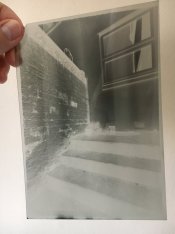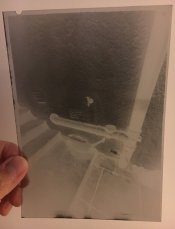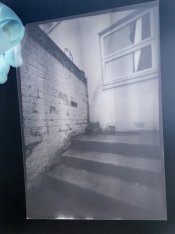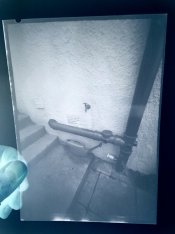


 I know it was discussed so many times but I couldn't find the answer for this combo though it could be me only.
I know it was discussed so many times but I couldn't find the answer for this combo though it could be me only.I started developing 5x7 sheets in 5x7 trays.
First I only rocked the tray back and forth and I got the stripes so then I changed this rocking process to back and forth and left to right and clockwise or anticlockwise as I hold a tray in my hands. The outcome was way better but still, they are uneven.
It’s fomapan 400 in Rodinal 1:50 for 10 minutes as I cut the development time by 10% because I use pinhole and could get quite contrasty negs and cutting helps it. I presoak the negs for 2 minutes, 10 minutes in the dev, 30 seconds in the stop bath and 3-4 minutes in the fixer and then the wash. I used the same rocking process for all the baths. Continuous agitation in all trays.
Is it the rocking process or what if not? Should I use larger trays so the neg will have a larger space to move freely.
The reason why use Rodinal is because it pulls back the film speed so it also helps with the contrast.
I’ve DD-X as well but I don't know if I'd dilute it 1:9 so it won't be that strong would it make any difference?
The first neg is the first attempt the second when I used all three rocking moves.
Last edited:


